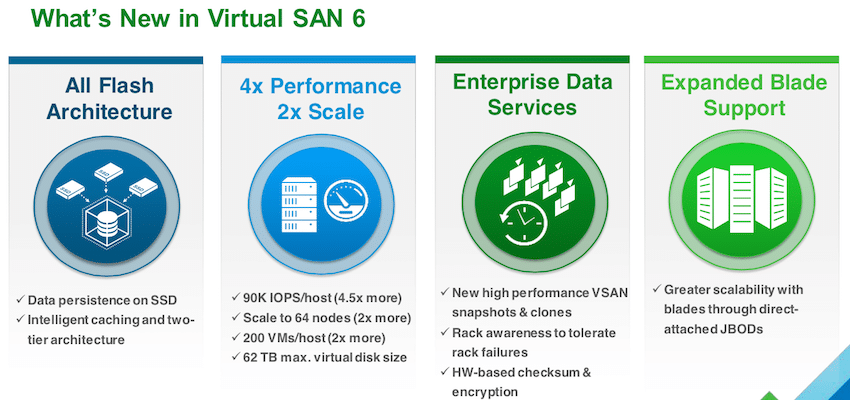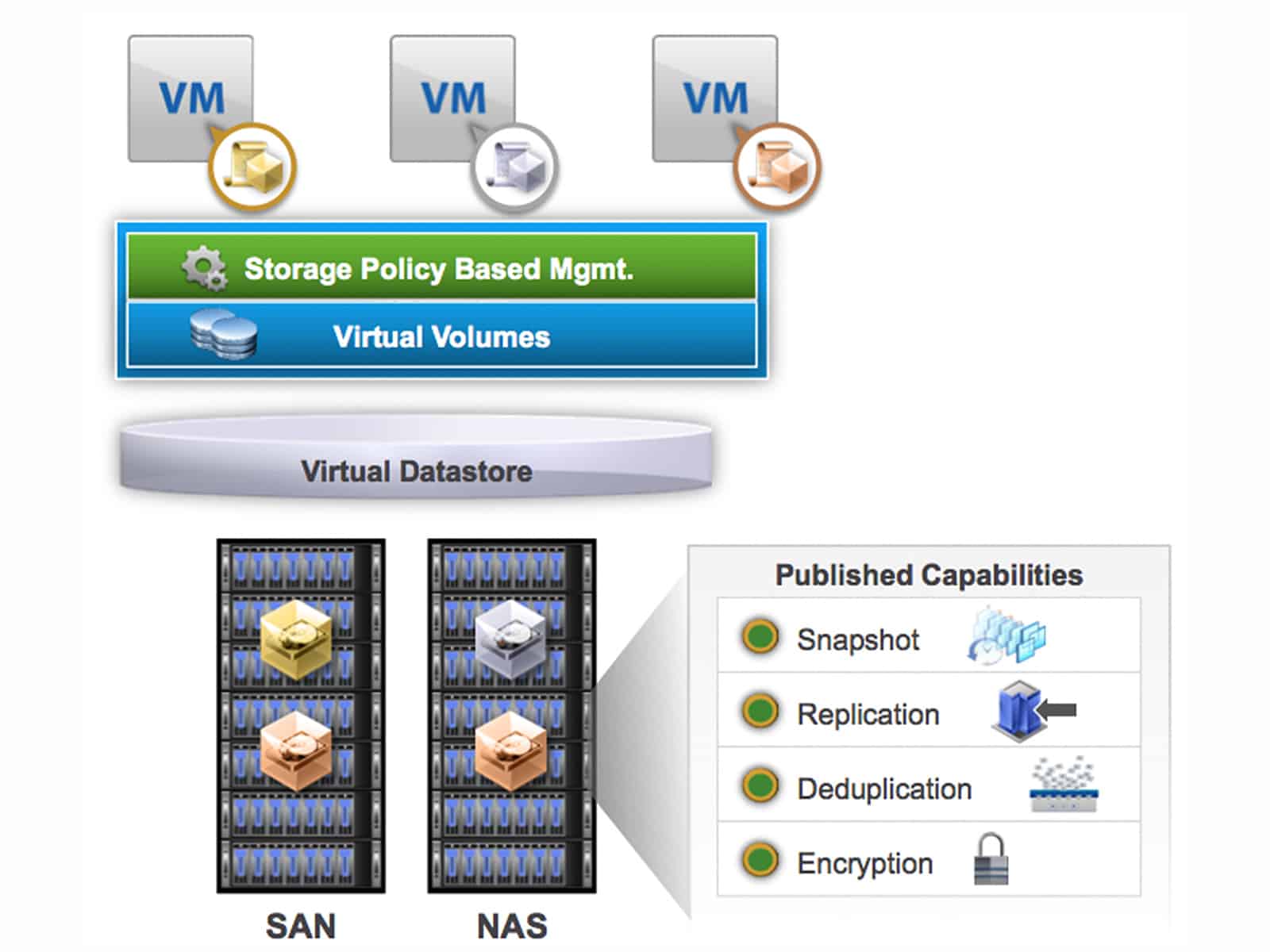Today VMware Inc launched the latest version of their software-defined storage solution, Virtual SAN 6 (VSAN). VMware Virtual SAN 6 has significant scalability and performance enhancements including new all-flash configuration support. VMware will also introduce the industry’s first solution to enable native Virtual Machine-awareness across a broad range of third-party storage systems, VMware vSphere Virtual Volumes (vVOLS). These two new launches are designed to enable mass adoption of software-defined storage.
Today VMware Inc launched the latest version of their software-defined storage solution, Virtual SAN 6 (VSAN). VMware Virtual SAN 6 has significant scalability and performance enhancements including new all-flash configuration support. VMware will also introduce the industry’s first solution to enable native Virtual Machine-awareness across a broad range of third-party storage systems, VMware vSphere Virtual Volumes (vVOLS). These two new launches are designed to enable mass adoption of software-defined storage.
VMware Virtual SAN 6 has several scalability and performance improvements over Virtual SAN 5.5: twice as many hosts per cluster (now at 64); twice as many VMs per host (now at 200); twice as many IOPS per host (now at 40K for the hybrid and 90K or four and half times for the all-flash) 16 times the snapshot depth per VM (now at 32 per VM); and 31 times the virtual disk size (now at 62TB). Virtual SAN 6 is an enterprise-class storage platform ideal for VM storage, is built for virtual infrastructure, and is ready for business-critical applications.
Virtual SAN 6 Highlights
- New All-Flash architecture – VMware Virtual SAN 6 enables a two-tier all-flash architecture in which flash devices are intelligently used for both caching and data persistence. Tier 1 is used as 100% write buffer while Tier 2 is strictly for caching. This architecture provides more than four-times increase in IO throughput per node compared to VMware Virtual SAN 5.5 while delivering predictable sub-millisecond latency
- Scalability increased to 64 nodes / cluster – As mentioned the new release doubles scalability to 64 nodes per cluster enabling customers to exceed 8 petabytes of storage capacity from a cluster
- Maximum throughput of 7 million IOPS / cluster –A 64-node VMware Virtual SAN cluster now delivers up seven million input/output operations per second (IOPS) with nearly perfect linear scalability
- New enterprise-grade snapshots – The release introduces a high performance and efficient snapshot capability increasing the snapshot depth to 32 per virtual machine while minimizing the performance overhead
- New Rack-awareness – Intelligent placement of virtual machine objects across server racks for enhanced application availability even in case of complete rack failures
- Expanded support for blades – With new support for direct-attached JBODs, customers can now scale VMware Virtual SAN 6 clusters to large capacity in server blade environments
VMware vSphere Virtual Volumes (vVols) is VMware’s attempt to set a new industry standard for software-defined storage that enables storage arrays to become VM-aware. vVols is a set of APIs that enable a granular integration between storage arrays (SAN/NAS) and vSphere at the VM level, in a VM by VM basis. This enables storage arrays, defined by the storage administrators, to provision capacity and data services for each VM giving organizations more agile, cost-efficient, and easy to manage storage infrastructure. vVols will be managed through a common control plane. VMware has worked closely with five design partners (Dell, EMC, HP, IBM, and NetApp) and has a total of 29 partners actively engaged in the Virtual Volumes program.
vVols benefits include:
- Faster provisioning – Rapid storage provisioning through policy-based framework. Enables self-service provisioning of storage through integration with cloud and datacenter automation tools.
- Guarantee service levels at VM-level – Granular control of storage service levels for each VM. Dynamically compose and modify storage services, leveraging native array-level capabilities. Use automation to ensure policy compliance through VM lifecycle (placement, remediation, and monitoring).
- Reduce Storage total cost of ownership – Increase capacity utilization by enabling more granular provisioning of storage at VM level. Eliminate wasted storage resources stemming from data service overprovisioning – give applications exactly what is required and no more no less. Reduce management overhead through automation and self-service capabilities.
Availability and pricing
VMware Virtual SAN 6 and vSphere Virtual Volumes are both expected to be available in the first quarter of 2015. Virtual SAN is $2,495 per CPU and Virtual SAN for Desktop is $50 per user. The all-flash architecture will be available as an add-on to Virtual SAN for $1,495 per CPU and $30 per desktop.


